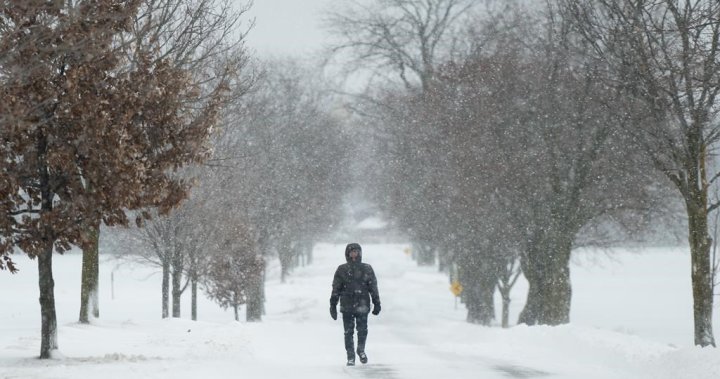On Sunday, intense snow squalls swept across much of cottage country, leading to severe impacts including road closures and widespread power outages in several regions. One town, Gravenhurst in the Muskoka area of Ontario, officially declared a state of emergency following the storm, which resulted in a staggering 140 centimetres of snowfall. As conditions worsened, Highway 11, a crucial roadway connecting communities such as Bracebridge, Orillia, and Barrie, became impassable. Road closures were reported in both directions from Huntsville to Orillia due to whiteout conditions, with many vehicles stranded along the highway. Local authorities and first responders utilized snowmobiles to reach and assist individuals trapped in their vehicles as they continued to navigate the treacherous conditions.
The Ontario Provincial Police (OPP) were closely monitoring the harsh weather event that blanketed Muskoka and urged residents to refrain from traveling unless necessary. OPP Detachment Commander Wade Beebe provided guidance to local citizens, advising them to keep a close eye on their gas levels and stay safe. The impact of the storm prompted Ontario Premier Doug Ford to announce that extra resources would be dispatched to support Gravenhurst and the surrounding regions affected by the snowstorm. Premier Ford reassured the public via social media of his government’s collaboration with local authorities to ensure that essential resources were available for effective storm response.
The extreme weather conditions were largely attributed to the recent warm temperatures meeting the incoming winter chill, resulting in heavy snowfall across the province. According to Global News chief meteorologist Anthony Farnell, the preceding mild fall created record warm water temperatures in the Great Lakes, providing perfect conditions for the subsequent heavy snow caused by arctic air moving into the region. Farnell’s observations highlighted that the confluence of warm water and cold air played a significant role in producing the intense squalls experienced in several communities across Ontario.
Warnings from Environment Canada indicated that the snow threat was shifting southward, putting additional areas on alert for significant snowfall. Forecasts predicted accumulations of 15 to 25 centimetres for locations along Lake Huron and the southern shores of Georgian Bay. Communities such as London could expect up to 30 centimetres by Tuesday morning, with snow advisories also issued for regions like Kitchener and Newmarket. Environment Canada advised that an intense snow squall was imminent, capable of impacting road conditions due to reduced visibility and brief yet heavy snowfall. Meteorologists cautioned that while some areas might witness only minor accumulations, the potential for more significant totals remained a possibility in certain locales.
For many regions, Sunday marked the second consecutive day of heavy snow as the storm continued to impact daily life and transportation. On Saturday, nearly a metre of snow was reported to have blown off the shoreline of the Great Lakes, causing closures on the Trans-Canada Highway and leaving over 30,000 homes without power. Areas near Lakes Superior and Huron bore the brunt of the adverse weather, with continued snow squall warnings issued. Other communities, including Niagara Falls and Kingston, faced lake-effect snow squall watches, indicating that the storm system was still very active and posed a risk to public safety.
The forecast indicated little relief from the wintry conditions, as the cold air remained persistent and was anticipated to bring more snowfall in the days ahead. Meteorologist Anthony Farnell emphasized that the likelihood of further snow accumulation was high, and residents should prepare accordingly as the cold weather continued to dominate the region. Travelers and citizens alike were advised to stay informed and vigilant, as the harsh winter weather not only challenged local infrastructure but also posed risks to those attempting to navigate in and around the affected areas. The ongoing response to the storm underscored the significance of community preparedness and the importance of keeping lines of communication open amid challenging weather events.

